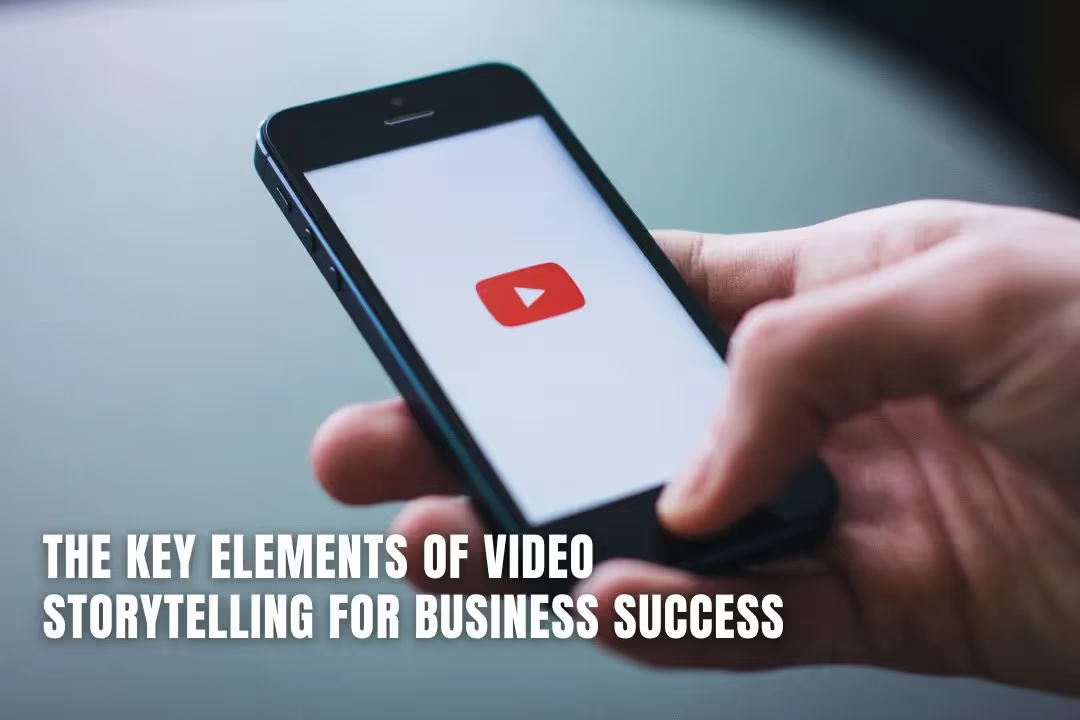
In today’s fast-paced digital landscape, businesses must stand out to capture the attention of their target audience. One of the most compelling ways to do this is through video storytelling. Unlike traditional advertising methods, which often focus on pushing a product, video storytelling allows companies to connect with their audience on an emotional level, making their brand more relatable and memorable.
A well-crafted story can turn a casual viewer into a loyal customer, making video storytelling a powerful tool in any business's marketing arsenal. This is especially true for companies collaborating with a digital marketing agency that understands the nuances of crafting a compelling narrative.
The foundation of every good video story is the connection between the viewers and the program. People are inclined to share their emotions about the stories they hear, whether positive or negative, pleasant or thrilling. This is why video storytelling is so prevalent within businesses; it can elicit an emotional response. When a brand can evoke emotion in the viewers, it has done its job. Emotional bonds are responsible for attracting customers, making them purchase a product, and spreading the word about the brand.
For instance, we have brands such as Coca-Cola and Nike. They very seldom simply advertise their products in commercials. Instead, they tell stories of joy, success, and resilience, as befitting a society aspiring to be first-world. Such stories help the viewer develop positive feelings toward the brand, making customers more likely to buy and support those brands.
Companies should know what feelings they would like to induce in the audience. This could depend on the type of product or service the business is selling in the market. For instance, a company selling baby products may select themes such as protection, warmth, and affection, while a tech company can choose to embrace concepts such as innovation, advancement, and enablement. Knowing the feelings that are appealing to the target audience can expand the impact of video stories on businesses.
As ads around the globe surround consumers, it becomes critical for businesses to be genuine. Everyone wants to hear tangible stories that are relatable and grounded in reality. Authenticity in storytelling cuts through the noise of promotional content, allowing businesses to forge deeper connections with their audience. When a brand presents as trustworthy and sincere, people are likelier to engage and remain loyal. This trust is the foundation of customer loyalty and business success.
In the modern world, consumers have become more sceptical of traditional advertising. They are quick to recognise when something feels overly polished or inauthentic. A genuine story resonates because it speaks to real-life experiences, reflecting the challenges, triumphs, and emotions people encounter daily. Brands that capture this reality in their storytelling can create a lasting impact, making their products or services feel more human, relatable, and valuable.
Everyone can recognise a genuine video story by using real people, real-life experiences, and authentic emotions. Authentic storytelling is about being honest with your audience and not trying to fabricate an idealised image that doesn’t align with the brand’s core values or mission. Brands that over-try to craft a perfect image often come across as disingenuous, leading to a disconnect with their audience. Once a brand is perceived as fake, it takes significant effort to rebuild that lost trust. On the flip side, brands embracing their imperfections, discussing their evolution, and focusing on their customers’ success stories are far more believable and likeable.
As important as the story is, how it is told through graphics and video quality can either help or hinder a video. Good graphics are useful in that they assist the viewer in becoming a part of the story, as opposed to just watching it. On the other hand, poor-quality production may overshadow the message and make the brand look unprofessional. In video marketing, where first impressions matter, even small details in production can significantly affect how your audience perceives your brand. A video with great content but subpar visuals might fail to make an impact because viewers are often drawn to what they see before engaging with the message.
But businesses can spend millions of dollars on production. More importantly, the visuals and production style correspond to the story being told. The visuals should enhance the narrative, not distract from it. For instance, a craft-based business may have a more informal, close-up approach to marketing because its products are handmade. In contrast, a technology-based company may employ professionally produced, sleek images since they are a tech startup. The production style should reflect the brand's identity and resonate with its audience. A highly polished video may work for a luxury brand, but an overly produced video for a grassroots company could feel out of place and inauthentic.
It’s also essential to consider the platform where the video will be shared. A video for social media might require different production decisions than one for a website or a full-length ad campaign. Social media videos often benefit from quicker edits and more attention-grabbing visuals, whereas longer-form content can afford a slower, more detailed storytelling approach. By understanding the platform’s audience, businesses can tailor the production elements to suit that platform's viewing habits and expectations.
Therefore, video storytelling is not just a fad but a tool of great value for any business. By showing emotions, being truthful, and paying attention to high-quality images, companies can tell meaningful stories that will be remembered.
Today, it is challenging to differentiate a brand, but the brands that have a good story to tell are the ones that succeed. They grab the attention of their target market and engage them with sustained interactions that produce customers and business sales. Nowadays, video storytelling is not an option for businesses that want to take their marketing to the next level. Whether working with a digital marketing agency or internally, the right story will be important in the future.